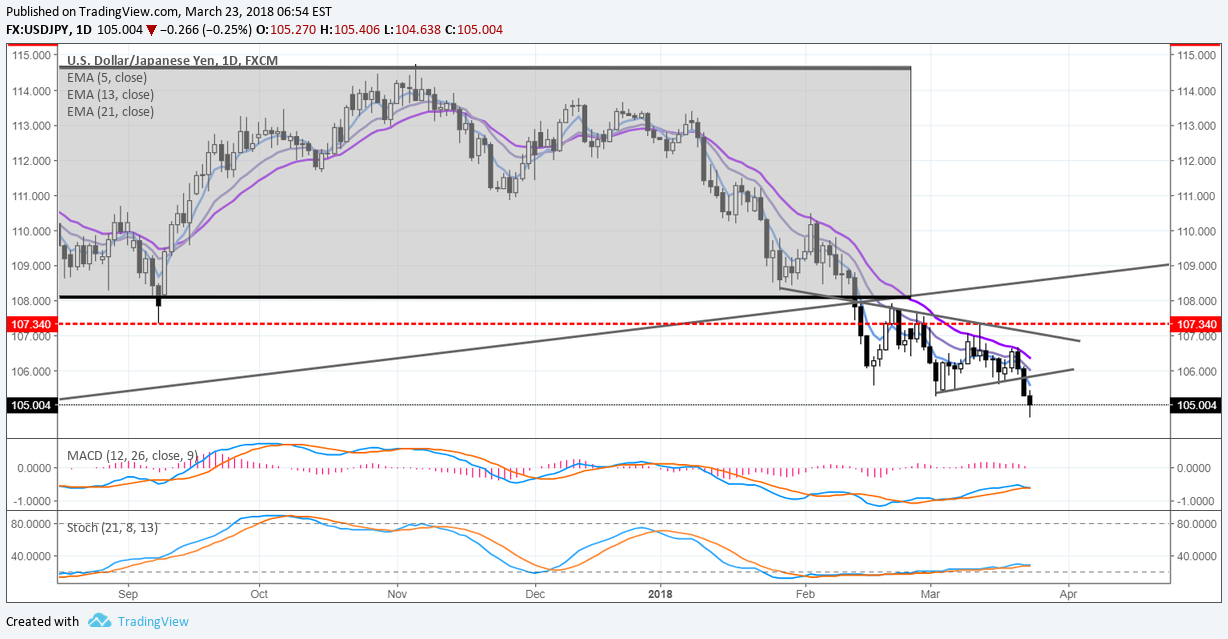The US Dollar (via DXY Index) has undergone another bout of volatility thanks to the announcement of the Trump trade tariff against China. With the $50 billion tariff announcement yesterday, coupled with the response by the Chinese government to levy its own retaliatory tariff on $3 billion of US goods, it seems that our concerns of a budding trade war are well-founded.
The opening salvo in a potential globe trade war has yielded little positivity for global markets. Equities in the US were smashed lower yesterday, with Asian markets not far behind: the Japanese Nikkei 225, for example, has broken its uptrend from the June and November 2016, September 2017, and early-March 2018 swing lows. This environment is proving highly beneficial for the Japanese Yen.
SYMMETRICAL TRIANGLE YIELDS NEW LOWS IN USD/JPY
Following the breakdown in global equity markets, particularly the Nikkei 225, USD/JPY has seen the symmetrical triangle it was consolidating in during March yield a break to the downside. The move to fresh yearly lows, despite the rebound in the European trading session, should not be taken lightly, particularly as the geopolitical backdrop has eroded quickly.
Price Chart 1: USD/JPY Daily Timeframe (July 2017 to March 2018)

Price remains below the uptrend from the late-2012 and mid-2016 lows (diagonal line cutting from bottom left to mid-right on chart above), and the daily 21-EMA is still holding up as the backbone of weakness since January 8. With both MACD and Slow Stochastics now issuing sell signals in bearish territory, a ‘bearish’ bias remains appropriate with further losses eyed in the near-term. Only a close through the daily 21-EMA will provide just cause for us to revisit our outlook for more USD/JPY weakness.
EUR/USD REMAINS STUCK IN KEY REVERSAL RANGE
Seemingly immune to the trade woes plaguing other currencies, EUR/USD remains largely rangebound since the middle of January. The bearish daily key reversal on February 16 and a bullish daily key reversal on March 1 have kept the pair in check, definining what has been a near 400-pip range since January 15.











Leave A Comment